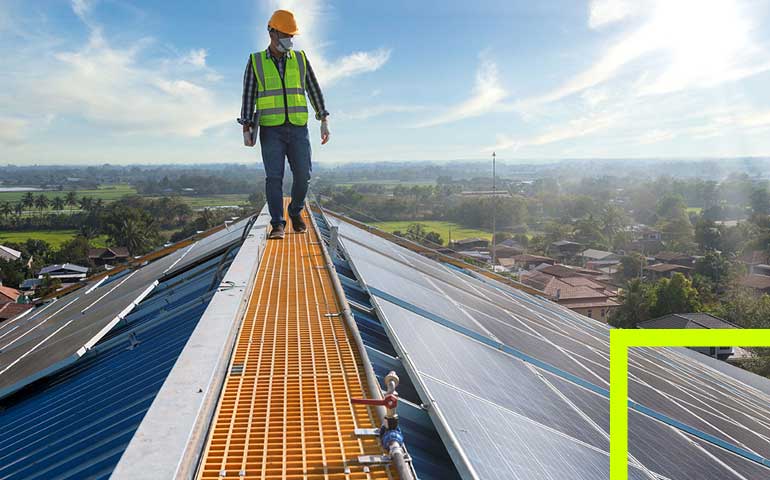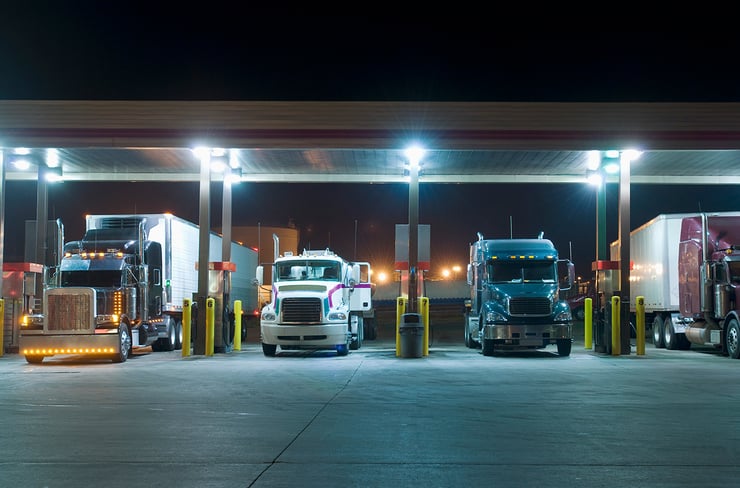Unlock the Power of Marketing: Get Your Free Marketing Plan Workbook
Enhance your marketing expertise with our free Marketing Plan Workbook, tailored specifically for small business owners...

What is Carbon Pricing and Its Effect on Your SME.
Putting a price on carbon pollution is a centerpiece of Canada’s environmental policy. But like with any new tax, the mounting costs for small and medium businesses aren’t always welcome news. Learning about Canadian carbon pricing will help you minimize the downsides of this extra expense while maximizing potential profits.
Carbon pricing, also known as the carbon tax, has been a part of Canadian business since it was introduced through the Greenhouse Gas Pollution Pricing Act (GGPPA), in 2018. As the country works to make its Paris Agreement environmental commitments to produce net-zero emissions by 2050, Canadian carbon pricing will continue to evolve and continue to get more expensive. Are you ready for the impact of carbon pricing on your SME?
What Is Carbon Pricing in Canada?
By definition, “carbon pricing is a market-based mechanism that creates financial incentives to reduce greenhouse gas emissions.” In Canada, carbon pricing takes the form of a regulatory charge on fossil fuels, known as the fuel charge, and a performance-based system for larger emitting industries, known as the Output-Based Pricing System (OBPS).
The fuel charge and the OBPS are applied across provinces and territories under two systems. The federal pricing system has more than half a million small businesses in Canada that are affected by the national carbon price in the four covered provinces.
Those provinces that administer their own carbon pricing systems either fully or in part - Quebec, New Brunswick, Nova Scotia, Newfoundland and Labrador, British Columbia and the Northwest Territories - operate OBPS, cap-and-trade programs and/or offset programs in combination.
The Difference Between Federal Versus Provincial Carbon Pricing Programs
The federal carbon pricing program, known as the “backstop” program, is a legislated network of carbon pricing regulations that automatically go into effect for any province that does not create its own rules about carbon pricing or that suggests a system that doesn’t meet federally-mandated standards. This backstop is meant to promote flexibility for provinces to independently design their own carbon pricing system to reduce emissions while also ensuring a carbon price “floor” so Canada can continue to meet its global commitments.

What Are the Different Types of Carbon Pricing in Canada?
Fuel charge or fuel tax
Most small and medium businesses in jurisdictions under the federal system will have noticed the most significant impact of carbon pricing through a fuel tax. The tax is an extra charge added at the beginning of the fuel supply chain to account for the fuel’s potential pollution. As of April 2022, the federal carbon price of fuel is $50 per tonne of CO2e, which comes to 11 cents per liter for gasoline, 13 cents per liter of diesel and 10 cents per cubic meter of natural gas.
The tax applies to 22 different types of fuels, from gasoline to combustible waste and airplane turbo fuel. Different provinces have rebates and exemptions on this tax for some fuel types. Fuels used in commercial fishing, agriculture, greenhouse operations and to power certain generators in remote communities are partially or fully exempt from the tax in all provinces and territories under the federal backstop program.
The output-based pricing system
Larger industrial facilities that emit 50 kilotonnes (kt) or more CO2e per year are registered into the Output-Based Pricing System, where every emitter is given a baseline amount of GHG emissions they can acceptably produce. Those who exceed their quota pay for excess emissions either through a GHG Pollution Tax, a trade-in compliance unit (known as cap-and-trade) or through buying federal offsets from the government.
Cap-and-trade is an indirect form of carbon pricing where the government assigns limits, or caps, on the amount of carbon emissions industrial facilities can produce. Organizations that emit less than permitted can sell their unused permits to other companies that have exceeded theirs.
The Benefits of Carbon Pricing for SMEs
Different provinces and territories price carbon differently depending on whether they have their own provincial programs or are registered with the federal backstop. They receive and reinvest the revenue differently, as well.
The revenue collected through the federal carbon pricing program between 2018 and 2020 was reinvested back into the territory where it was collected through the Climate Action Incentive, which reallocated 90% of the proceeds from the federal fuel charge directly to individual families, reducing the overall burden of carbon pricing on the average consumer by 80%. The remaining 10% goes to fund programs for schools, health centers, SMEs, cities and municipalities, nonprofits, and Indigenous communities.
Between 2019 and 2020, SMEs in the federal backstop system received targeted funding from carbon pricing revenue through two project funding streams administered by The Climate Action Incentive Fund (CAIF).
The CAIF - SME Project Stream allocated $150 million to SMEs in the four provinces under the backstop program in 2018-2019. This funding covered projects aimed at reducing their energy usage and costs or greenhouse gas emissions.
The overall benefits from carbon pricing to SMEs are numerous across industries, regardless of federal or provincial program administration. The system has already reduced emissions country-wide. In British Columbia, for example, emissions would also be 15% higher without its carbon tax. Overall the tax is projected to inject billions of dollars of additional revenue into the country’s GNP while adding jobs and increasing consumer spending.
For example, an analysis of British Columbia’s carbon tax system, one of the provincially-administered systems, suggests the program increased the total number of jobs in the province by an average of 5,000 each year between 2007 and 2013.
In Canadian construction, it’s reported that high carbon prices will add an estimated $2.5 billion of extra income to the industry and generate nearly 20,000 new jobs by 2025. Other sectors should expect an additional 20,000 new jobs across the board.
In Quebec, for example, the provincial financial framework for the next five years will benefit from an additional $1 billion thanks to revenue from carbon pricing.

The Future of Carbon Pricing
Canadian carbon levy systems aren’t perfect and have yet to fully address the problems SMEs report as a result of carbon taxes. For example, it’s been noted that of the 500 federal programs meant to grow the low-carbon economy through carbon tax proceeds, only five are specifically targeted to SMEs.
“Small businesses pay about 25 percent of the fuel charge but can pass on only about three-fifths of those added costs. That means small businesses bear about 10 percent of the fuel-charge cost. Still, the government is designating only 7 percent of the revenues to SMEs,” reported Michael Bernstein, Executive Director of Clean Prosperity, a non-profit organization, to The Globe and Mail.
The federal government continues to develop extended programs to address these concerns with an additional injection of $1.5 billion of fuel tax proceeds into SME-specific funding programs. One such upcoming program is a direct rebate stream administered by the CAIF, which will give SMEs a rebate of up to 50% on new energy-efficient equipment. Additional provincial and federal projects are being developed country-wide.

Enhance your marketing expertise with our free Marketing Plan Workbook, tailored specifically for small business owners...

Find out what you need to know to bypass the most common marketing pitfalls.

Expand your SME business network the right way. Learn how to connect with like-minded SME owners and decision-makers to...